-
 Bitcoin
Bitcoin $112400
-1.07% -
 Ethereum
Ethereum $3409
-3.27% -
 XRP
XRP $2.784
-6.60% -
 Tether USDt
Tether USDt $0.9997
-0.03% -
 BNB
BNB $739.3
-2.09% -
 Solana
Solana $158.0
-2.90% -
 USDC
USDC $0.9998
-0.02% -
 TRON
TRON $0.3213
-0.94% -
 Dogecoin
Dogecoin $0.1929
-5.01% -
 Cardano
Cardano $0.6974
-2.82% -
 Hyperliquid
Hyperliquid $36.69
-2.31% -
 Sui
Sui $3.327
-4.80% -
 Stellar
Stellar $0.3672
-5.18% -
 Chainlink
Chainlink $15.65
-3.07% -
 Bitcoin Cash
Bitcoin Cash $525.0
-1.68% -
 Hedera
Hedera $0.2291
-6.00% -
 Avalanche
Avalanche $20.91
-2.96% -
 Ethena USDe
Ethena USDe $1.000
0.00% -
 Toncoin
Toncoin $3.520
-1.12% -
 UNUS SED LEO
UNUS SED LEO $8.968
0.14% -
 Litecoin
Litecoin $105.7
0.26% -
 Shiba Inu
Shiba Inu $0.00001181
-1.79% -
 Polkadot
Polkadot $3.492
-2.08% -
 Uniswap
Uniswap $8.800
-3.10% -
 Dai
Dai $0.9999
-0.01% -
 Monero
Monero $289.9
-3.17% -
 Bitget Token
Bitget Token $4.243
-1.27% -
 Pepe
Pepe $0.00001006
-3.67% -
 Cronos
Cronos $0.1248
-5.68% -
 Aave
Aave $249.7
-2.50%
How to check the price of the Binance Futures Index? What does the deviation rate affect?
The Binance Futures Index price can be checked on the Binance platform, and understanding its deviation rate is key for spotting arbitrage opportunities in crypto futures trading.
May 19, 2025 at 12:21 pm
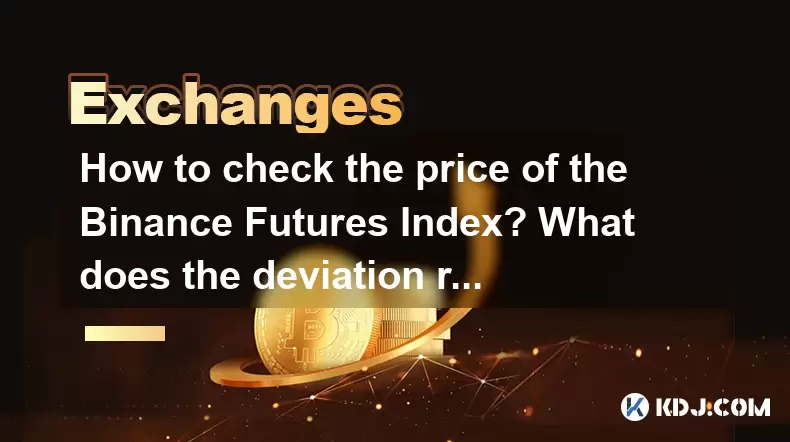
The Binance Futures Index is a valuable tool for traders who want to keep an eye on the overall performance of the cryptocurrency futures market. Understanding how to check the price of the Binance Futures Index and the impact of the deviation rate is essential for making informed trading decisions. This article will guide you through the process of checking the price of the Binance Futures Index and explain how the deviation rate affects your trading strategy.
Checking the Price of the Binance Futures Index
To check the price of the Binance Futures Index, you can follow these simple steps:
Open the Binance Website or App: Start by visiting the Binance website or opening the Binance app on your mobile device.
Navigate to the Futures Section: Once you are on the Binance platform, navigate to the "Futures" section. You can find this section in the main menu or by clicking on the "More" tab and selecting "Futures."
Select the Index: In the Futures section, look for the "Indices" tab. Click on it to view a list of available indices. The Binance Futures Index is typically listed as "Binance Futures Index" or "BFI."
View the Price: Once you have selected the Binance Futures Index, you will be able to see its current price displayed on the screen. The price is updated in real-time, allowing you to monitor its performance closely.
Understanding the Deviation Rate
The deviation rate is a crucial metric that measures the difference between the price of the Binance Futures Index and the prices of the individual futures contracts that make up the index. It is expressed as a percentage and can have a significant impact on your trading strategy.
Calculation of the Deviation Rate: The deviation rate is calculated by taking the difference between the index price and the weighted average price of the individual futures contracts, then dividing that difference by the index price and multiplying by 100 to get a percentage.
Impact on Trading: A high deviation rate indicates a larger difference between the index price and the prices of the individual futures contracts. This can signal potential arbitrage opportunities or market inefficiencies that traders can exploit. Conversely, a low deviation rate suggests that the index price closely tracks the prices of the individual futures contracts, indicating a more stable market environment.
Factors Affecting the Deviation Rate
Several factors can influence the deviation rate of the Binance Futures Index. Understanding these factors can help you better interpret the deviation rate and make more informed trading decisions.
Market Volatility: High market volatility can lead to larger price discrepancies between the index and individual futures contracts, resulting in a higher deviation rate. During periods of low volatility, the deviation rate tends to be lower as prices move more in sync.
Liquidity: The liquidity of the futures contracts included in the index can also affect the deviation rate. Contracts with higher liquidity tend to have smaller price discrepancies, leading to a lower deviation rate. Conversely, contracts with lower liquidity can contribute to a higher deviation rate.
Trading Volume: The trading volume of the futures contracts can influence the deviation rate. Higher trading volumes can lead to more efficient pricing and a lower deviation rate, while lower trading volumes can result in larger price discrepancies and a higher deviation rate.
Using the Deviation Rate in Your Trading Strategy
The deviation rate can be a valuable tool for traders looking to optimize their trading strategy. Here are some ways you can use the deviation rate to enhance your trading decisions:
Identifying Arbitrage Opportunities: A high deviation rate can signal potential arbitrage opportunities where you can buy or sell futures contracts at a price different from the index price. By taking advantage of these price discrepancies, you can potentially profit from the difference.
Assessing Market Efficiency: The deviation rate can also help you assess the efficiency of the futures market. A consistently low deviation rate suggests a more efficient market where prices are closely aligned, while a consistently high deviation rate may indicate market inefficiencies that you can exploit.
Adjusting Your Trading Approach: Depending on the deviation rate, you may need to adjust your trading approach. During periods of high deviation rates, you may want to be more aggressive in seeking out arbitrage opportunities. During periods of low deviation rates, you may want to focus on other trading strategies that are better suited to a more stable market environment.
Monitoring the Deviation Rate
To effectively use the deviation rate in your trading strategy, it is important to monitor it regularly. Here are some tips for monitoring the deviation rate:
Use Real-Time Data: Make sure you have access to real-time data on the deviation rate. This will allow you to stay up-to-date on any changes and adjust your trading strategy accordingly.
Set Alerts: Consider setting alerts for specific deviation rate thresholds. This can help you quickly identify when the deviation rate reaches a level that may present trading opportunities.
Analyze Historical Data: Analyzing historical data on the deviation rate can help you identify patterns and trends. This can provide valuable insights into how the deviation rate typically behaves and how you can use it to your advantage.
Frequently Asked Questions
Q: Can the deviation rate be negative?
A: Yes, the deviation rate can be negative. A negative deviation rate indicates that the price of the Binance Futures Index is lower than the weighted average price of the individual futures contracts.
Q: How often is the Binance Futures Index updated?
A: The Binance Futures Index is updated in real-time, meaning its price is constantly being recalculated based on the latest data from the individual futures contracts.
Q: Is the deviation rate the same for all traders?
A: The deviation rate is calculated based on the same formula for all traders, but the interpretation and use of the deviation rate can vary depending on each trader's strategy and goals.
Q: Can the deviation rate be used to predict future price movements?
A: While the deviation rate can provide insights into market inefficiencies and potential arbitrage opportunities, it is not a reliable predictor of future price movements. It should be used as one of many tools in your trading arsenal.
Disclaimer:info@kdj.com
The information provided is not trading advice. kdj.com does not assume any responsibility for any investments made based on the information provided in this article. Cryptocurrencies are highly volatile and it is highly recommended that you invest with caution after thorough research!
If you believe that the content used on this website infringes your copyright, please contact us immediately (info@kdj.com) and we will delete it promptly.
- BlockDAG, SEI, Ethena: Top Crypto Performers Under the Microscope
- 2025-08-03 10:50:16
- Bitcoin Blasts Past $119K: How Institutional Adoption and Macro Shifts Fuel the Fire
- 2025-08-03 10:55:16
- Crypto, Grok, and August: Decoding the Latest Trends and Insights
- 2025-08-03 11:10:16
- Crypto, Phishing, and Your Wallet: A New Yorker's Guide to Staying Safe
- 2025-08-03 10:30:16
- Troller Cat Meme Coin Presale Soars: A New King in the Crypto Jungle?
- 2025-08-03 10:30:16
- Grayscale, Altcoin Trust, and Mid-Cap Mania: What's the Deal?
- 2025-08-03 08:50:16
Related knowledge
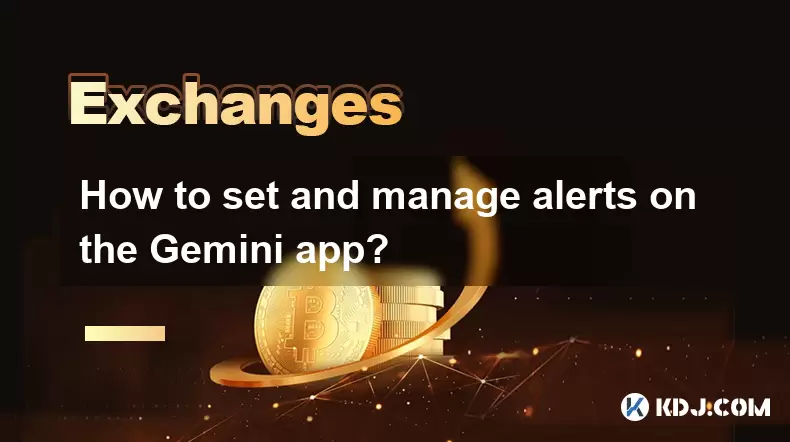
How to set and manage alerts on the Gemini app?
Aug 03,2025 at 11:00am
Understanding the Gemini App Alert SystemThe Gemini app offers users a powerful way to stay informed about their cryptocurrency holdings, price moveme...
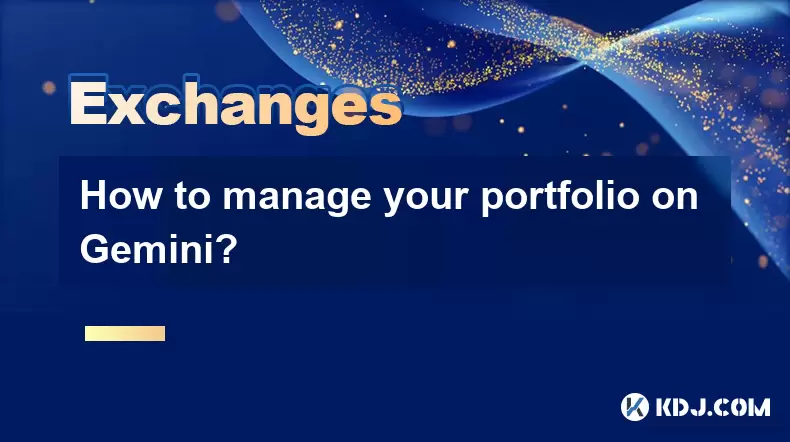
How to manage your portfolio on Gemini?
Aug 03,2025 at 10:36am
Accessing Your Gemini Portfolio DashboardTo begin managing your portfolio on Gemini, you must first log in to your account through the official websit...
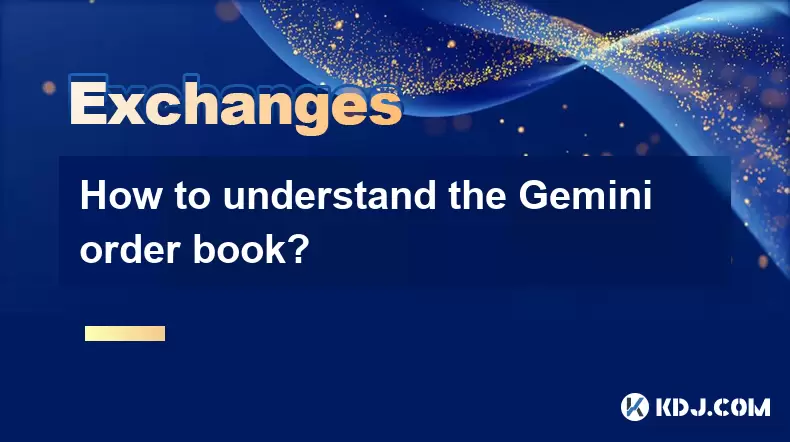
How to understand the Gemini order book?
Aug 02,2025 at 03:35pm
What Is the Gemini Order Book?The Gemini order book is a real-time ledger that displays all open buy and sell orders for a specific cryptocurrency tra...
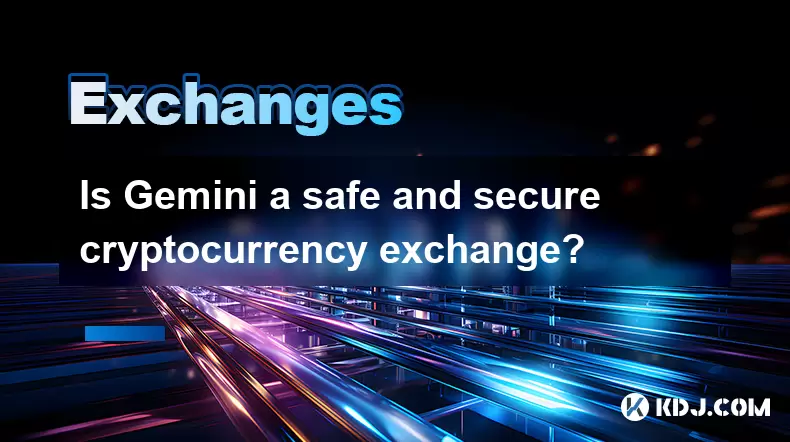
Is Gemini a safe and secure cryptocurrency exchange?
Aug 02,2025 at 10:42pm
Understanding Gemini’s Regulatory ComplianceGemini is a New York State-chartered trust company, which places it under the supervision of the New York ...
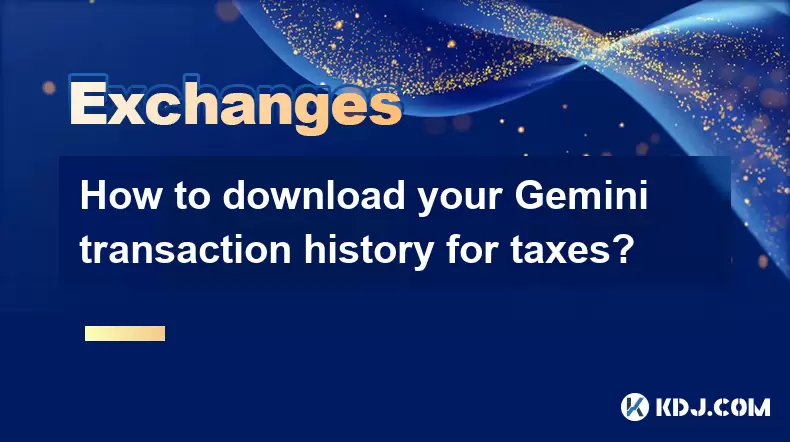
How to download your Gemini transaction history for taxes?
Aug 03,2025 at 09:15am
Understanding Gemini Transaction History for Tax PurposesWhen preparing your cryptocurrency tax filings, having a complete and accurate record of all ...
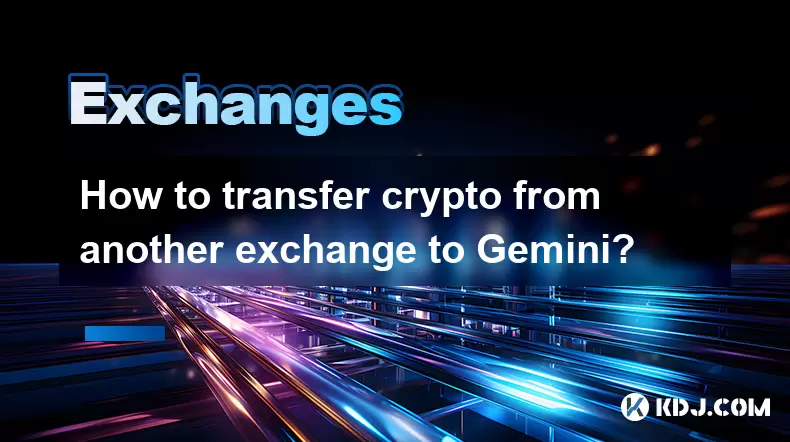
How to transfer crypto from another exchange to Gemini?
Aug 02,2025 at 07:28pm
Understanding the Basics of Crypto Transfers to GeminiTransferring cryptocurrency from another exchange to Gemini involves moving digital assets from ...

How to set and manage alerts on the Gemini app?
Aug 03,2025 at 11:00am
Understanding the Gemini App Alert SystemThe Gemini app offers users a powerful way to stay informed about their cryptocurrency holdings, price moveme...

How to manage your portfolio on Gemini?
Aug 03,2025 at 10:36am
Accessing Your Gemini Portfolio DashboardTo begin managing your portfolio on Gemini, you must first log in to your account through the official websit...

How to understand the Gemini order book?
Aug 02,2025 at 03:35pm
What Is the Gemini Order Book?The Gemini order book is a real-time ledger that displays all open buy and sell orders for a specific cryptocurrency tra...

Is Gemini a safe and secure cryptocurrency exchange?
Aug 02,2025 at 10:42pm
Understanding Gemini’s Regulatory ComplianceGemini is a New York State-chartered trust company, which places it under the supervision of the New York ...

How to download your Gemini transaction history for taxes?
Aug 03,2025 at 09:15am
Understanding Gemini Transaction History for Tax PurposesWhen preparing your cryptocurrency tax filings, having a complete and accurate record of all ...

How to transfer crypto from another exchange to Gemini?
Aug 02,2025 at 07:28pm
Understanding the Basics of Crypto Transfers to GeminiTransferring cryptocurrency from another exchange to Gemini involves moving digital assets from ...
See all articles

























































































